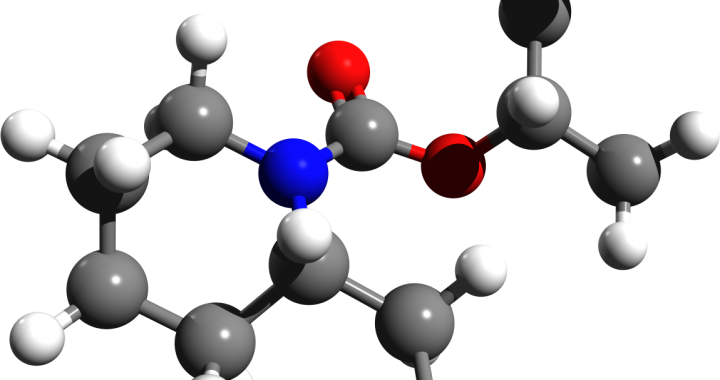
RECHANA
The pharmacological action that removes the contents of the body especially intestines in a liquid state through the natural orifices situated below (Anus and Urethra) then such an activity is known as RECHANA. In comparison to the other three that are mentioned by Sharangadhara namely ANULOMANA, SRAMSANA AND BHEDANA, this is more drastic. The example that is being mentioned by Sharangadhara is taken as SUKHA VIRECHANA substance by the scholars in Ayurveda. Thus the details are being discussed in the subsequent parts of the page.
DETAILS OF THE ACTION
ACTION NAME
रेचन
MODERN EQUIVALENTS
DRASTIC PURGATIVES
DEFINITION
DEFINITION
EXPLANATION/MEANING
REFERENCE
The reference is from Sharangadhara Samhita (शा. स.)
SYNONYMS (IF PRESENT)
SYNONYMS
EXPLANATION/MEANING
REFERENCE
NONE
NONE
NONE
MODE OF ACTION / PHARMACODYNAMICS
AYURVEDA EXPLANATION
MODERN EXPLANATION
The action RECHANA is one among the 4 types of VIRECHANA process mentioned by SHARANGADHARA which is mainly on the basis of the mode of activity and not on the basis of the potency of the substance. In the other classical texts the classification of VIRECHANA is classified on the basis of the intensity of the substance. Accordingly they are of three types namely तीक्ष्ण विरेचन (Teekshna virechana), मृदुविरेचन (Mridu virechana) and सुखविरेचन (Sukha). The present action will be considered under the category of सुखविरेचन (Sukhavirechana) as per the example being used in the quotation.
According to Charaka who described the modality of any Virechana substance in his Kalpa Sthana 1st chapter that the substance which is bound to produce VIRECHANA (irrespective of the type) action should be having the five important properties namely उष्णगुण (Ushna), तीक्ष्णगुण (Teekshna), सूक्ष्मगुण (Sukshma), व्यवायी (Vyavayi) and विकाशी (Vikasi) properties along with अधोभागहर प्रभाव (Adhobhagahara prabhava). This holds good to any variety of VIRECHANA through any mode of classification.
The present variety of pharmacological action too is not an exception. But the pattern is different making it to be differentiated from the other three. These substances have the capacity to purge the person and remove the substances either मल (feaces) or दोष (Dosha) which may be present in a fully metabolized or unmetabolized state. The excretion of the same will be in a completely liquid state (द्रवतां नयेत्) which denotes that the substance that is being used highly irritant in nature.
Even though the substance mentioned in the example is said to be SUKHAVIRECHAKA its action is similar to that of a Drastic purgatives.
The action that is being considered here is the Drastic Purgatives. The substances that have a very powerful action of forceful excretion and are harsher in their action. They produce violent peristalsis and an overdose may produce colic pain or even gastroenteritis. They are also known to be as stimulant purgatives too.
Purgatives are those substances that perform the function of loosening the stools and evacuate them by increasing the bowel movements. It is different from a laxative by virtue of its action. A laxative is always mild and eliminates soft but formed stools. While, the purgative will lead to a more stronger action resulting in more fluid evacuation along with improperly formed stools. It is generally of two types namely Osmotic purgatives and Stimulant purgatives. The variety considered as Stimulant purgatives are also known as Drastic Purgatives. This is because they act on the nervous plexus and stimulate them to produce a very powerful action. Hence it may result in abdominal cramps along with or without nausea.
INVESTIGATIVE PARAMETERS TO ASSESS
Sl. No.
CATEGORY OF PARAMETER
INVESTIGATION NAME
TYPE OF INVESTIGATION
1.
NOT YET COMPILED
NOT YET COMPILED
NOT YET COMPILED
LIST OF PLANTS THAT EXHIBIT THE ACTION
Plants mentioned in CHARAKA SAMHITA KALPA STHANA used for the purpose of VIRECHANA.
Charaka has not mentioned a separate group of Virechana drugs under the 50 Ganas. This may be because that there is separate set of substances that produce Virechana out of which some are selected and described in six chapters of the Kalpa Sthana. The list of them are as mentioned below:
Sl. No.
SANSKRIT NAME
BOTANICAL NAME
PART USED
1.
त्रिवृत
Luffa echinata Roxb
Fruit
2.
चतुरङ्गुल
Luffa acutangula (L) Roxb
Fruit
3.
तिल्वक
Euphorbia pilosa Linn
Latex
4.
सुध
Momordia charantia L
Fruit
5.
शङ्खिनी
Euphorbia dracunculoides Lam
Root, seed, latex
6.
सप्तल
Lagenaria siceraria Standle
Fruit
7.
दन्ति
Lagenaria siceraria Standle
Fruit
8.
द्रवन्ति
Lagenaria siceraria Standle
Fruit
RESEARCH PAPERS ON THE PHARMACOLOGICAL ACTION
Sl. No.
TITLE OF THE PAPER
PUBLISHING JOURNAL
CITATION
1.
Clinical efficacy of Shodhana Karma and Shamana Karma in Mandala Kushtha (Psoriasis).
AYU
Mangal, Gunjan et al. “Clinical efficacy of Shodhana Karma and Shamana Karma in Mandala Kushtha (Psoriasis).” Ayu vol. 33,2 (2012): 224-9. doi:10.4103/0974-8520.105242
2.
CLINICAL EVALUATION OF SAMSHODHANA(VAMANA KARMA) THERAPY ANDSAMSHAMANA (PATHADI GHANA VATI) THERAPY IN THE MANAGEMENT OF PREDIABETES
International Journal of Green Pharmacy
Umesh Chaudhary. “CLINICAL EVALUATION OF SAMSHODHANA(VAMANA KARMA) THERAPY ANDSAMSHAMANA (PATHADI GHANA VATI) THERAPY IN THE MANAGEMENT OF PREDIABETES”. International Journal of Green Pharmacy. Volume 10. Issue No.2. Apr-June 2016.


